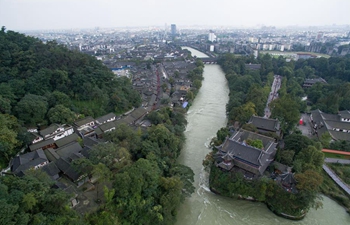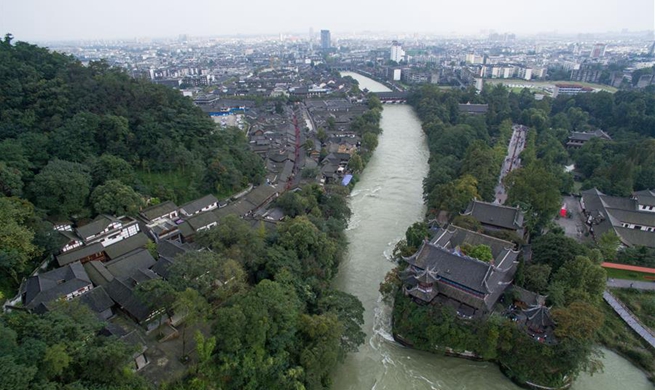WASHINGTON, Aug. 15 (Xinhua) -- A study published on Wednesday in the journal Science Advances showed that the amount of water used per well for hydraulic fracturing increased by up to 7.7 times between 2011 and 2016 in all major shale gas and oil production regions in the United States.
The volume of brine-laden wastewater that fracked oil and gas wells generated during their first year of production surged by up to 14.4 times during the same period, according to the Duke University study.
It predicted that if this rapid intensification continues, fracking's water footprint could grow by up to 50-fold in some regions by the year 2030, raising concerns about its sustainability, particularly in arid or semi-arid regions where groundwater supplies are stressed or limited.
"Previous studies suggested hydraulic fracturing does not use significantly more water than other energy sources, but those findings were based only on aggregated data from the early years of fracking," said Avner Vengosh, professor of geochemistry and water quality at Duke's Nicholas School of the Environment.
"We clearly see a steady annual increase in hydraulic fracturing's water footprint, with 2014 and 2015 marking a turning point where water use and the generation of flowback and produced water began to increase at significantly higher rates," said Vengosh.
The researchers collected and analyzed data with more than 12,000 individual wells located in all major U.S. shale gas and tight oil producing regions and used these historical data to model future water use.
The models showed that if current low oil and gas prices rise and production again reached levels seen during fracking's heyday in the early 2010s, cumulative water use and wastewater volumes could surge by up to 50-fold in unconventional gas-producing regions by 2030, and by up to 20-fold in unconventional oil-producing regions.
"Even if prices and drilling rates remain at current levels, our models still predict a large increase by 2030 in both water use and wastewater production," said the paper's lead author Andrew Kondash, a PhD student in Vengosh's lab.
A well's wastewater is comprised chiefly of brines extracted with the gas and oil from deep underground, blended with some of the water initially injected into the well during hydraulic fracturing.
These brines are typically salty and may contain toxic and naturally occurring radioactive elements, making them difficult to treat and dispose of safely.
"New drilling technologies and production strategies have spurred exponential growth in unconventional oil and gas production in the United States and, increasingly, in other parts of the world," Kondash said.
"Lessons learned from production development in the United States can directly inform the planning and implementation of hydraulic fracturing practices elsewhere as other countries such as China, Mexico and Argentina bring their unconventional natural gas reserves online," Kondash said.













